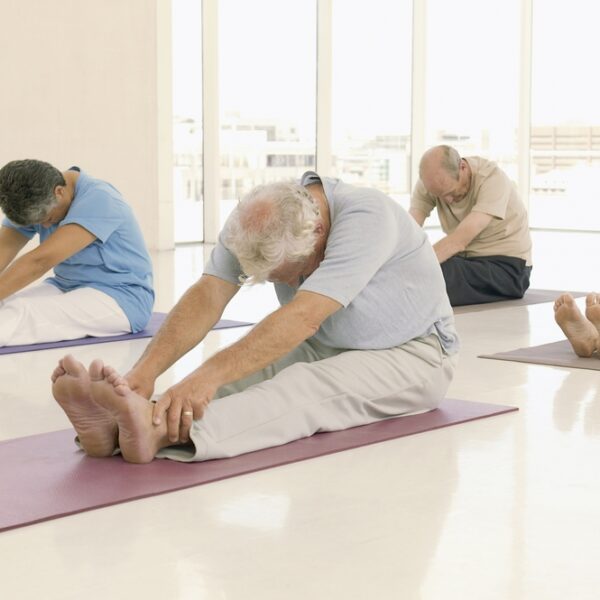Nobody likes knee pain, especially if you train regularly. Unfortunately, knee pain is not only extremely common, but it’s also even more common among people who are avid gym members or joggers. In fact, it can make it more difficult to stick to a fitness regime, or, if you choose to continue despite the pain, it might get worse and turn into chronic pain. The main problem about knee pain is that the knee is one of the main articulations in the body. If you can’t move your knee properly, it’s fair to say that you can’t move properly either. You might be experiencing issues when sitting down with your knees bent, or when walking and putting pressure on your knees.
In a word, knee pain can be handicapping. It doesn’t pose a problem in training only; it’s an everyday obstacle to all situations. However, more often than not, knee pain is the result of improper movement or weight pressure, which is the equivalent of saying that knee pain can be addressed efficiently and easily by correctly the harmful elements in your posture.
There are 7 common causes of knee pain that most people ignore. However, before you embark on a self-diagnostic journey, it’s important that you remember two things. Firstly, you should get in touch with a physical therapist or a chiropractor to discuss your knee pain and receive tailored training exercises to correct the problem, try searching online mentioning your area and desired gender, e.g. ‘female chiropractor houston‘. Secondly, this list serves as an indication, but if the pain continues you will need to make an appointment with a doctor for an in-depth examination.
#1. You’ve got a history of ankle sprains and other mobility issues
There is such a thing as ankle mobility. Unfortunately, it can often be overlooked when you train. If you lack flexibility in the ankle, your leg isn’t able to take the additional and sudden pressure, such as the kind of pressure they receive when you run and your foot hits the ground, for example. In that case, the pressure is passed on to the next big articulation to compensate, aka your knee. If you lack flexibility in the ankle, then the knee with shift inward into a position that is called Genu Valgus. If you’re unsure of your ankle mobility, here’s a simple test to perform: Squat in front of a mirror with your knees at about hip width and parallel to each other. If your knees are shiting inward as you go deeper into the squat – there’s no need to go beyond a 90 degrees squat – then it’s a clear sign that you have issues with your dorsiflexion – that’s the name for the ankle’s lack of flexibility. Thankfully the solution is simple: You need to improve your dorsiflexion mobility. With targeted exercises, you can strengthen your ankle and gradually reduce your knee pain.
#2. You’ve got a history of foot pain and Achilles tendon pain
A lot of people who complain about knee pain have a history of heel pain, Achilles tendon pain or even plantar fasciitis on the same leg. Similarly those who have foot pain tend to experience knee pain too, In other words, knee and foot issues are often related, so by treating one, you’re likely to treat the other. That’s two birds killed with one stone, or to put it differently two pains with one exercise! Indeed, you might be suffering from a poor foot stability which causes your knees to shift inward again in the Genu Valgus position. It’s important to understand, for runners especially, that the knees are connected to the hips and the feet, so that if you’ve got a stability or movement issue at the foot, then it will touch the knee too. The only way to correct the problem is to consult a podologist who can help you to transform your posture and therefore your foot stability with specific soles and shoes. You are likely to experience joint pain during the process, as your body has been used to walking in a certain way for years. But using local application gels to relieve the discomfort – if you’re looking for a good brand: Flexiseq is a new gel to help joints – will help you to transition from unstable to stable foot smoothly. You will also find that some of your shoes won’t fit anymore, but that’s because the shape of your foot changes as you spread your weight differently on it.
#3. You lack strength in your hips
In scientific terms, it’s called poor abduction strength and external hip rotation. For everyone else, it means that you don’t have enough strength in your hips to maintain your knees in a safe position, and you, therefore, shift back in the Genu Valgus again. The muscles in your legs are weaker than in your hips. Therefore they can’t correct any hip weakness. But you can train your hips and strengthen them with targeted exercises. Lateral squats, with your feet wide apart, are about shifting your weight to one side and dropping your hips down. If this is too difficult or painful, train at first with a mini band around your ankles and spread your feet. This is a good way of safely building up hip strength.
#4. You lack hip flexibility
Another common issue with hips is the lack of mobility. If your hips are not flexible enough, then you feel tight in your adductor muscles – the muscles around the groin – and therefore your knees move back to the Genu Valgus position. So it’s important to improve your hip flexibility, using yoga practice for soft and in-depth training exercises. As you try to maintain position, use the yoga respiration technique to help you to settle deeper and deeper into the extension movement. As you begin to focus on your respiration, you will find it easier to push your hip flexibility further. Don’t force it, though: Your muscles need time to adjust to new requirements.
#5. You’re not as stable as you should be
You can create a chain reaction in your body if you are unstable in your core. A strong core is about keeping your posture straight. However, if you lack strength, your pelvis will tilt towards one side as you walk, and put additional pressure on your hips and then knees. So it might sound surprising, but if you’ve got knee pain, you might want to train your abs. A strong core will keep your pelvis stable and release any unwanted pressure. Don’t think crunches though, but think of the core as a whole with back, butt, stomach, chest and upper thighs. These muscle areas will help to stabilize your pelvis and trunk.
#6. You train too much
If you lift weights as part of your training, you might be lifting too much or doing too many reps. This will cause fatigue in your body and put you at risk of breaking your lifting squat by shifting your knees inward. However, knee pain is only one of the many signs of overtraining. If you lack the stamina to finish your workout or you’re struggling with increased water retention, then it’s time to chill out and slow down your training regime. Taking on too much in a short time can cause severe injuries! You should create your own workout routine to optimize the time spent exercising.
#7. You need to lose weight
If you’re not very active and you’ve been putting on a lot of weight in a short time, it’s likely that your knees are struggling with the extra pressure. There’s only one way round: You need to manage your diet and workout to drive weight loss.
From lack of flexibility or strength in areas of your body to weight issues, the only way to a healthy you is to listen to your body and to correct your errors. Learn to fix your knee pain easily!
Image Credits: Alora Griffiths




Like this article? Share with your friends!